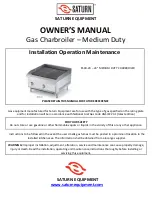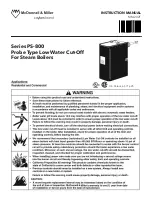
7 Configuration
Installation manual
16
E120B
R32 Split series – Domestic hot water tank
4P680074-1C – 2022.11
INFORMATION
To ensure most optimum operation of the outdoor unit, we
recommend to set the hysteresis to 6°C or higher.
INFORMATION
If Reheat setpoint is outside operation range of the outdoor
unit, then the hysteresis will refer to the the highest
temperature achievable by heat pump operation.
7.3
Weather-dependent curve
7.3.1
What is a weather-dependent curve?
Weather-dependent operation
The unit operates 'weather-dependent' if the desired tank
temperature is determined automatically by the outdoor temperature.
If the outdoor temperature drops or rises, the unit compensates
instantly. Thus, the unit does not have to wait for feedback by the
user to increase or decrease the target temperature of the tank.
Because it reacts more quickly, it prevents high rises and drops of
the water temperature at tap points.
Advantage
Weather-dependent operation reduces energy consumption.
Weather-dependent curve
To be able to compensate for differences in temperature, the unit
relies on its weather-dependent curve. This curve defines how much
the target temperature of the tank must be at different outdoor
temperatures. Because the slope of the curve depends on local
circumstances such as climate and the insulation of the house, the
curve can be adjusted by an installer.
Types of weather-dependent curve
There are 2 types of weather-dependent curves:
▪ 2-points curve
▪ Slope-offset curve
Which type of curve you use to make adjustments, depends on your
personal preference. See
"7.3.4 Using weather-dependent
Availability
The weather-dependent curve is available for:
▪ Tank (only available to installers)
INFORMATION
To operate weather-dependent, correctly configure the
setpoint of the tank. See
"7.3.4 Using weather-dependent
17].
7.3.2
2-points curve
Define the weather-dependent curve with these two setpoints:
▪ Setpoint (X1, Y2)
▪ Setpoint (X2, Y1)
Example
Y1
Y2
X1
X2
Item
Description
X1, X2
Examples of outdoor ambient temperature
Y1, Y2
Examples of desired tank temperature. The icon
corresponds to the heat emitter for that zone:
▪
: Domestic hot water tank
Possible actions on this screen
Go through the temperatures.
Change the temperature.
Go to the next temperature.
Confirm changes and proceed.
7.3.3
Slope-offset curve
Slope and offset
Define the weather-dependent curve by its slope and offset:
▪ Change the
slope
to differently increase or decrease the target
temperature of the tank for different ambient temperatures. For
example, if tank water temperature is in general fine but at low
ambient temperatures too cold, raise the slope so that the tank
temperature is heated increasingly more at decreasingly lower
ambient temperatures.
▪ Change the
offset
to equally increase or decrease the target
temperature of the tank for different ambient temperatures. For
example, if the tank temperature is always a bit too cold at
different ambient temperatures, shift the offset up to equally
increase the tank target temperature for all ambient temperatures.
Examples
Weather-dependent curve when slope is selected:
X1
X2
c
d
Y1
Y2
Y3
Y4
a
b
Weather-dependent curve when offset is selected:









































